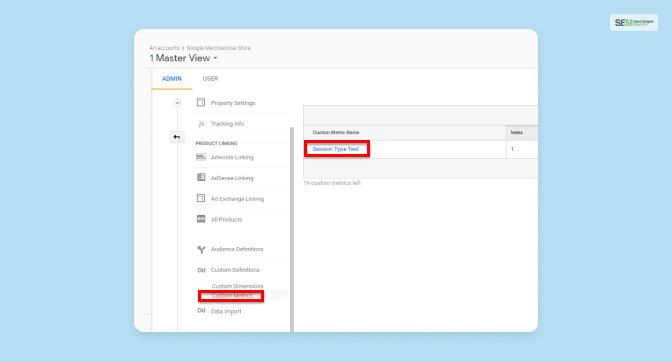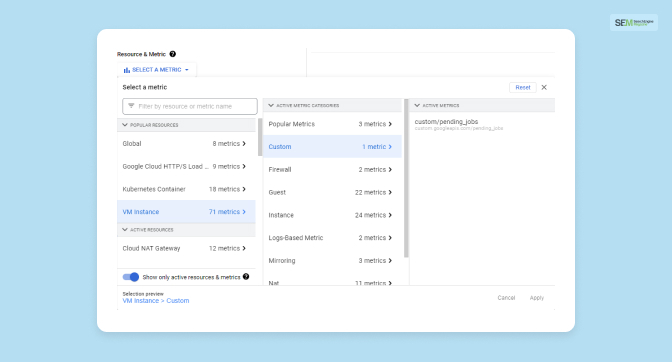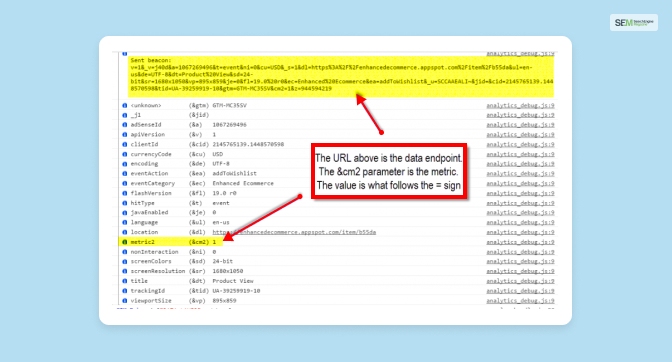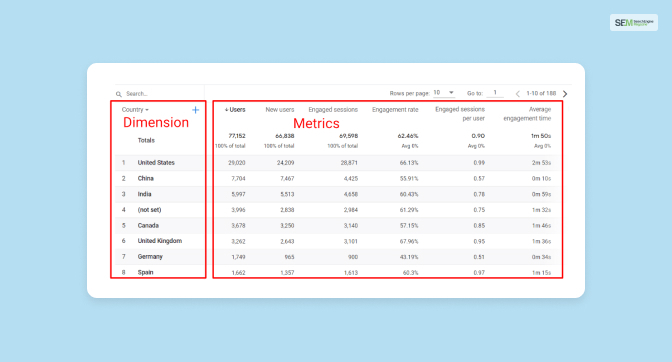How To Know If Someone Blocked You On iMessage? 5 Secret Hacks!
Apr 16, 2025

Apr 16, 2025

Apr 16, 2025

Apr 15, 2025

Apr 11, 2025

Apr 11, 2025

Apr 11, 2025

Apr 08, 2025

Mar 29, 2025
Sorry, but nothing matched your search "". Please try again with some different keywords.


When you are studying custom metrics, you will understand how they capture certain application-specific data and certain client-specific side system data. With custom metrics, you can also create metrics that are based on log entries content. Let’s understand about what scope applies to custom metrics?
So if you want to learn more about what scope applies to custom metrics then keep on scrolling through this article.

If you are appearing for an exam for Google Analytics, then you will be asked the following question, “What scope applies to Custom Metrics?” For this question you will have the following options, given below:
Here, the right answer will be: Hit.
Read More: Pros And Cons Of Google Analytics
“Custom metrics, also known as application-specific metrics, let you define and collect information the built-in loud Monitoring metrics cannot. You capture such metrics by using an API provided by a library to instrument your code, and then you send the metrics to a backend application like Cloud Monitoring.”
When we are talking about custom metrics, it can have numerous scopes just like Custom Dimensions. As per Google, “Scope determines which hits will be associated with a particular custom-dimension value.”
With Custom Dimensions, the hit-level scope applies “its value to the hit with which the value was set.” At the same time, “Custom Dimensions with product-level scope will only apply value to the product with which the value was set.”

It is important that there is a metrics descriptor with every metric type, this way it is how each metric data is organized. It is important to understand that the labels that are there for metrics and also metrics are defined properly in the metric descriptor.
With Cloud Monitoring, you are capable of creating metric descriptors for yourself if you use metric data. At the same time, you can create certain metric descriptors and after that, you can write the metric data. If this is the case, then it is important that you organize all of your metric data.
When you are in the process of creating your own custom metrics, it is important that you define the metric type by a string of identifiers. The strings should be unique for your custom metrics for your Google Cloud project.
While monitoring, the prefixes that you can use are such as external.googleapis.com/user, custom.googleapis.com/, and also external.googleapis.com/prometheus. It is important that you understand that an identifier is available in two distinct types when it comes to metric types, which are

It is important for you to know that when you are writing a time series data, you must explain or explain where the data is coming from. To be more specific about the exact source of the data, you can utilize a more monitored resource.
Well, you should understand that the monitored resource is not a part of the metric type. The metric type describes the data while on the other hand, the monitored resource generally describes exactly where the data originates.
To make your work easier, you can run a code using the monitored resource object, which is known to represent physical resources. There are several advantages to this approach, which are.

In the table given below, the method for Monitoring API supports custom metrics, and also the method to build metrics is given.
| Monitoring the API method | Use with custom metrics | Use with built-in metrics |
| monitoredResourceDescriptors.get | yes | yes |
| monitoredResourceDescriptors.list | yes | yes |
| metricDescriptors.get | yes | yes |
| metricsDescriptors.list | yes | yes |
| timeSeries.list | yes | yes |
| timeSeries.create | yes | |
| metricsDescriptors.create | yes | |
| metricDescriptors.delete | yes |
Read More: Which Default Traffic Source Dimensions Does Google Analytics Report For Each Website Visitor
Now that we have discussed what scope applies to custom metrics and understood what custom metrics are. So if you feel like you understand what custom metrics are then don’t forget to give us a like and comment down below, if you want more articles like these.
Read Also:
Nabamita Sinha loves to write about lifestyle and pop-culture. In her free time, she loves to watch movies and TV series and experiment with food. Her favorite niche topics are fashion, lifestyle, travel, and gossip content. Her style of writing is creative and quirky.
View all Posts
How To Know If Someone Blocked You On iMessag...
Apr 16, 2025
7 Website Design Mistakes That Are Hurting Yo...
Apr 16, 2025
Programmable Dynamic SEO for Location-Based P...
Apr 15, 2025
Google Boba Game: How To Play This Fun Game B...
Apr 11, 2025
Which Is The Best Video Search Engine Of 2025...
Apr 11, 2025

